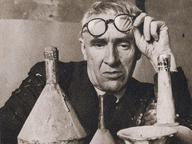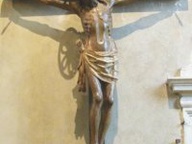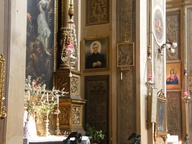Alma-Tadema: Classical Charm
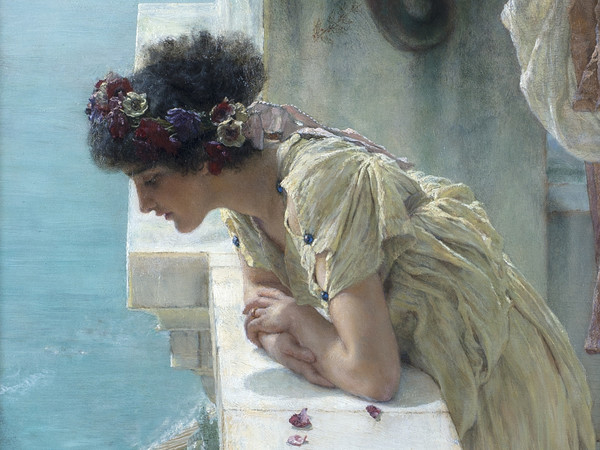
Sir Lawrence Alma-Tadema, Coign of Vantage (detail), 1895, oil on canvas, 58.88 x 44.45 cm, Collection of Ann and Gordon Getty
From 01 Ottobre 2016 to 07 Febbraio 2017
Leeuwarden | World
Place: Museum of Friesland
Address: Wilhelminaplein 92
Times: Da martedì a domenica dalle 11 alle 17
Ticket price: Intero € 12, ridotto € 6
Telefono per informazioni: +31 058 255 55 00
E-Mail info: info@friesmuseum.nl
Official site: http://www.friesmuseum.nl
Alma-Tadema was the most successful and seductive storyteller of his day. He accomplished this by an innovative use of space in his work. Through his great knowledge of archaeology and classical antiquity he managed to bring the days of ancient Rome to life in paintings. His scenes were received so enthusiastically all over the world that our present image of classical antiquity was influenced by them. In Hollywood too, Alma-Tadema’s interpretation caught on and became the basis for seminal films about this era, from Ben-Hur to Gladiator. His international top pieces and his world now meet in the Museum of Friesland.
Sir Lawrence Alma-Tadema (Dronryp 1836 - Wiesbaden 1912) grew up in Friesland (as Lourens), studied painting at the Academy of Arts in Antwerp, and then headed to London. There he became one of the most renowned and best paid artists of his time. His sense of spatiality, his love of theatre, his intuition in choosing the right friends, his fabulous technique and his archaeological knowledge made him so successful. In 1899 he was knighted, which entitled him to write Sir in front of his name. His work was also sold to America, ending up in the collections of the wealthiest individuals of that time, such as William H. Vanderbilt.
Staging antiquity
His painted scenes appeal to the imagination and are totally convincing. Even though we may not be aware of it, our picture of Roman antiquity has been largely defined by Alma-Tadema. The exhibition explores how this came to be by very closely following Alma-Tadema’s personal life and artistic career.
Tadema meets hollywood
No one could paint as convincingly as Alma-Tadema, so it is hardly surprising that Hollywood and Cinecittà were only too eager to convert his paintings into moving images for their Roman spectacles. Those early directors were after all looking for a visual language for the new mass medium of film and Alma-Tadema provided them with the blueprint for it. And this continues on to this day. Director Ridley Scott studied Alma-Tadema when making his successful films Gladiator (2000) and Exodus (2014). Scott’s production designer, Arthur Max, sees Alma-Tadema as someone who shows us Rome as we want it to appear, not necessarily as it really was.
Sir Lawrence Alma-Tadema (Dronryp 1836 - Wiesbaden 1912) grew up in Friesland (as Lourens), studied painting at the Academy of Arts in Antwerp, and then headed to London. There he became one of the most renowned and best paid artists of his time. His sense of spatiality, his love of theatre, his intuition in choosing the right friends, his fabulous technique and his archaeological knowledge made him so successful. In 1899 he was knighted, which entitled him to write Sir in front of his name. His work was also sold to America, ending up in the collections of the wealthiest individuals of that time, such as William H. Vanderbilt.
Staging antiquity
His painted scenes appeal to the imagination and are totally convincing. Even though we may not be aware of it, our picture of Roman antiquity has been largely defined by Alma-Tadema. The exhibition explores how this came to be by very closely following Alma-Tadema’s personal life and artistic career.
Tadema meets hollywood
No one could paint as convincingly as Alma-Tadema, so it is hardly surprising that Hollywood and Cinecittà were only too eager to convert his paintings into moving images for their Roman spectacles. Those early directors were after all looking for a visual language for the new mass medium of film and Alma-Tadema provided them with the blueprint for it. And this continues on to this day. Director Ridley Scott studied Alma-Tadema when making his successful films Gladiator (2000) and Exodus (2014). Scott’s production designer, Arthur Max, sees Alma-Tadema as someone who shows us Rome as we want it to appear, not necessarily as it really was.
SCARICA IL COMUNICATO IN PDF
COMMENTI

-
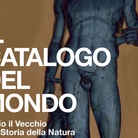 Dal 03 maggio 2024 al 31 agosto 2024
Como | Ex Chiesa di San Pietro in Atrio e Palazzo del Broletto
Dal 03 maggio 2024 al 31 agosto 2024
Como | Ex Chiesa di San Pietro in Atrio e Palazzo del Broletto
-
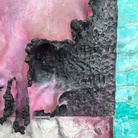 Dal 03 maggio 2024 al 14 luglio 2024
Pisa | Palazzo Blu
Dal 03 maggio 2024 al 14 luglio 2024
Pisa | Palazzo Blu
-
 Dal 04 maggio 2024 al 24 novembre 2024
Venezia | Spazio Vedova
Dal 04 maggio 2024 al 24 novembre 2024
Venezia | Spazio Vedova
-
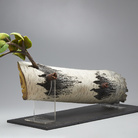 Dal 04 maggio 2024 al 26 maggio 2024
Torino | Palazzo Saluzzo Paesana
Dal 04 maggio 2024 al 26 maggio 2024
Torino | Palazzo Saluzzo Paesana
-
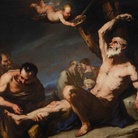 Dal 23 aprile 2024 al 01 settembre 2024
Bergamo | Accademia Carrara
Dal 23 aprile 2024 al 01 settembre 2024
Bergamo | Accademia Carrara
-
 Dal 26 aprile 2024 al 09 giugno 2024
Reggio nell'Emilia | Sedi varie
Dal 26 aprile 2024 al 09 giugno 2024
Reggio nell'Emilia | Sedi varie

